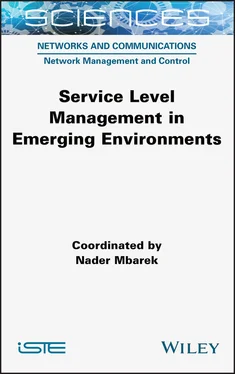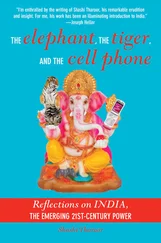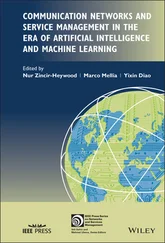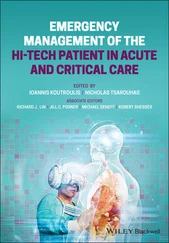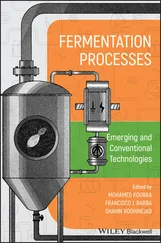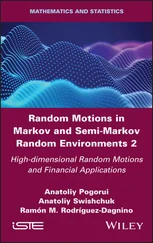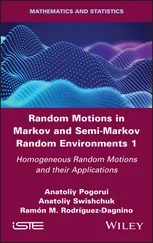10 6 Blockchain Based Authentication and Trust Management in Decentralized Networks 6.1. Introduction 6.2. The Blockchain Authentication and Trust Module (BATM) architecture 6.3. Evaluating BATM 6.4. Conclusion 6.5. References
11 7 How Machine Learning Can Help Resolve Mobility Constraints in D2D Communications 7.1. Introduction 7.2. D2D communication and the evolution of networks 7.3. The context for machine learning and deep learning 7.4. Dynamic discovery 7.5. Experimental results 7.6. Conclusion 7.7. References
12 8 The Impact of Cognitive Radio on Green Networking: The Learning-through-reinforcement Approach 8.1. Introduction 8.2. Green networking 8.3. Green strategies 8.4. Green wireless networks 8.5. How CR contributes to green networking 8.6. Learning through reinforcement by taking into account energy efficiency during opportunistic access to the spectrum 8.7. Conclusion 8.8. References
13 List of Authors
14 Index
15 End User License Agreement
1 Chapter 1Figure 1.1. The ITU-T architecture of the Internet of Things (ITU-T 2012). For a...Figure 1.2. Architecture of the Internet of Things (Lin et al. 2015). For a colo...Figure 1.3. Architecture of the Internet of Things (Khalil et al. 2018) Figure 1.4. Comparison of the structure of the IEEE 802.15.4 and the QBAIoT supe...Figure 1.5. Algorithm for the QBAIoT access method at the gateway level Figure 1.6. Algorithm for the QBAIoT access method at the loT object level Figure 1.7. Average real-time mission critical delays for different scenarios Figure 1.8. Average real-time non-mission critical delays for different scenario...Figure 1.9. Packet Delivery Ratio for all QoS classe. For a color version of thi...
2 Chapter 2Figure 2.1. Standardization bodies for the Cloud (Sakai 2011). For a color versi...Figure 2.2. Depiction of an Autonomic Manager (IBM 2005). For a color version of...Figure 2.3. Inter Cloud broker-based Cloud Networking architecture. For a color ...Figure 2.4. Depiction of the XML diagram for an iSLA Figure 2.5. Interactions in a broker-type architecture Figure 2.6. Federation Cloud Networking architecture. For a color version of thi...Figure 2.7. Interactions in a federation-type architecture Figure 2.8. Evaluation of the average global end-to-end delay. For a color versi...Figure 2.9. Evaluation of the jitter. For a color version of this figure, see ww...Figure 2.10. Evaluation of the bandwidth cost. For a color version of this figur...Figure 2.11. Evaluation of the global VMs cost. For a color version of this figu...Figure 2.12. Evaluation of latency and response time. For a color version of thi...Figure 2.13. Evaluation of the global bandwidth cost. For a color version of thi...Figure 2.14. Evaluation of the global VM cost. For a color version of this figur...
3 Chapter 3Figure 3.1. Architecture of a microgrid. For a color version of this figure, see...Figure 3.2. Architecture of a DSM platform. For a color version of this figure, ...Figure 3.3. Classification of DSM approaches Figure 3.4. Architecture of a smart agent
4 Chapter 4Figure 4.1. The architecture of e-health systems (Hamdi et al. 2014)
5 Chapter 5Figure 5.1. The different architectures of a wireless mesh network Figure 5.2. General architecture of the framework. For a color version of this f...Figure 5.3. Evaluating (a) average end-to-end delay and (b) jitter for a VoIP ap...Figure 5.4. Performances of the IMRR protocol versus MARIA and IDAR. Evaluation ...Figure 5.5. Evaluation of (a) average end-to-end delay and (b) average jitter fo...
6 Chapter 6Figure 6.1. Example of the protocol stack for the IoT Figure 6.2. Identity structure and secondary key Figure 6.3. Peering process Figure 6.4. The processing window Figure 6.5. Trust calculation – smart contracts Figure 6.6. Complete calculation window. For a color version of this figure, see...Figure 6.7. Simulation of failure of a node. For a color version of this figure,...
7 Chapter 7Figure 7.1. Device-to-Device communication between UE1 and UE2 as a sublayer in ...Figure 7.2. The machine learning flowchart Figure 7.3. Example of node positions for a morning traffic scenario with low us...Figure 7.4. Example of the node positions for a morning traffic scenario with hi...Figure 7.5. Number of periods required for complete discovery. For a color versi...Figure 7.6. Percentage of energy consumed for the two cases considered: low and ...
8 Chapter 8Figure 8.1. The contribution of different devices to the network’s energy consum...Figure 8.2. Energy consumption based on use (Barroso and Holzle 2007) Figure 8.3. The op ti mized carbo n footprint for s pecific operational l oads (Bianz...Figure 8.4. The Mitola cognition cycle (Mitola 1998) Figure 8.5. Compromise: The bandwidth, transmission power, distance and flow rat...Figure 8.6. State and condition of the channel for the SU. For a color version o...Figure 8.7. New machine learning algorithm Figure 8.8. CR versus CR with Q_learning. For a color version of this figure, se...
1 Chapter 1Table 1.1. Parameters for the QBAIoT simulation scenarios
2 Chapter 2Table 2.1. Platforms for implementing Cloud Computing Table 2.2. Simulation software in Cloud Computing Table 2.3. Tools for implementing and simulating Cloud Networking Table 2.4. Inter-Cloud implementation and simulation tools Table 2.5. Standardization of QoS in the Cloud Table 2.6. Standardization of security in the Cloud Table 2.7. Standardization of security in the Cloud
3 Chapter 3Table 3.1. Table summarizing DSM approaches
4 Chapter 4Table 4.1. Importance of QoS for e-health procedures/services (Skorin-Kapov and ...Table 4.2. Medical images: characteristics and QoS required (Vouyioukas et al. 2...Table 4.3. QoS required for the constrained e-health flows (Gállego et al. 2005) Table 4.4. Security required by WBANs and possible solutions (Ng et al. 2006)
5 Chapter 6Table 6.1. Global parameters for BATM Table 6.2. BATM simulation parameters
6 Chapter 7Table 7.1. Examples of SVR kernel functions Table 7.2. Simulation parameters and values
1 Cover
2 Table of Contents
3 Title Page SCIENCES Networks and Communications, Field Director – Guy Pujolle Network Management and Control, Subject Head – Francine Krief
4 Copyright First published 2020 in Great Britain and the United States by ISTE Ltd and John Wiley & Sons, Inc. Apart from any fair dealing for the purposes of research or private study, or criticism or review, as permitted under the Copyright, Designs and Patents Act 1988, this publication may only be reproduced, stored or transmitted, in any form or by any means, with the prior permission in writing of the publishers, or in the case of reprographic reproduction in accordance with the terms and licenses issued by the CLA. Enquiries concerning reproduction outside these terms should be sent to the publishers at the undermentioned address: ISTE Ltd 27-37 St George’s Road London SW19 4EU UK www.iste.co.uk John Wiley & Sons, Inc. 111 River Street Hoboken, NJ 07030 USA www.wiley.com © ISTE Ltd 2020 The rights of Nader Mbarek to be identified as the author of this work have been asserted by him in accordance with the Copyright, Designs and Patents Act 1988. Library of Congress Control Number: 2020933380 British Library Cataloguing-in-Publication Data A CIP record for this book is available from the British Library ISBN 978-1-78945-002-6 ERC code: PE7 Systems and Communication Engineering PE7_1 Control engineering PE7_8 Networks (communication networks, sensor networks, networks of robots, etc.)
Читать дальше
